Area 3,891 km² | Population 700,577 (2011) | |
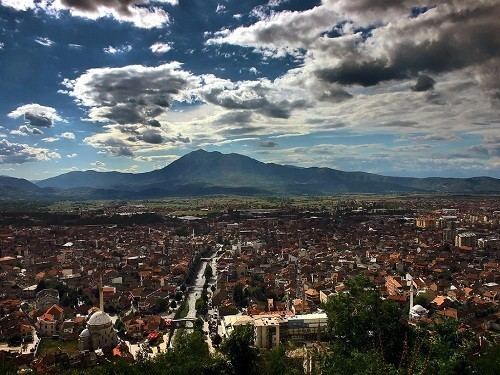 | ||
Metohija (Serbian Cyrillic: Метохија, [mɛtɔ̌xija]) or Dukagjini (Albanian: Rrafshi i Dukagjinit, [ˈrafʃi i dukaˈɟinit])) is a large basin and the name of the region covering the southwestern part of Kosovo. The region covers 35% (3,891 km2) of Kosovo's total area. According to the 2011 census, the population of the region is 700,577.
Contents
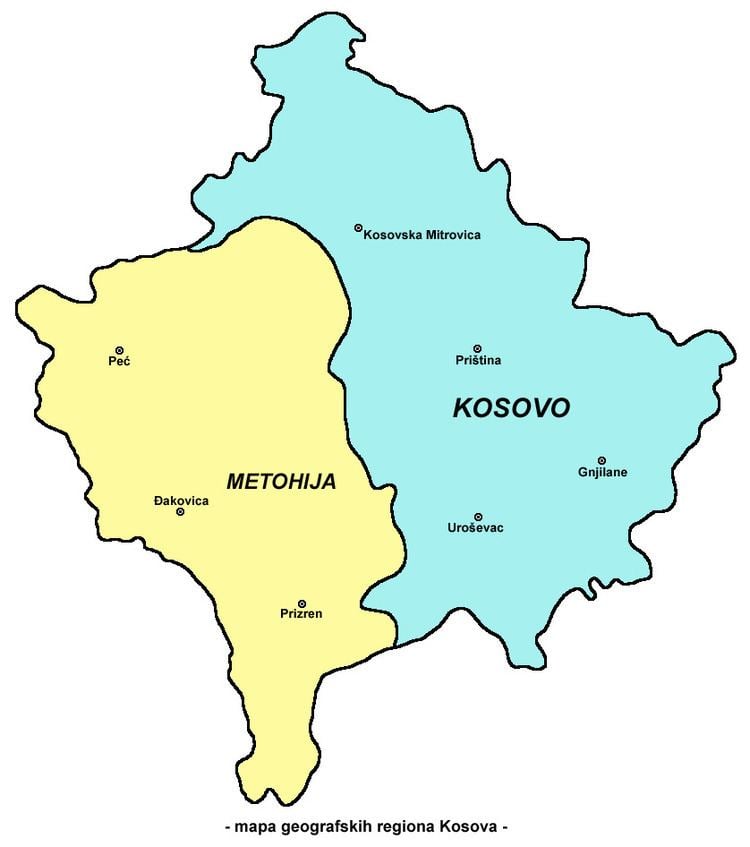
Gkud smederevo metohija
Districts
It encompasses three of the seven districts of Kosovo:
Names

The name Metohija derives from the Greek word μετόχια (metókhia, metochion), meaning "monastic estates" – a reference to the large number of villages and estates in the region that were owned by the Serbian Orthodox monasteries and Mount Athos during the Middle Ages.
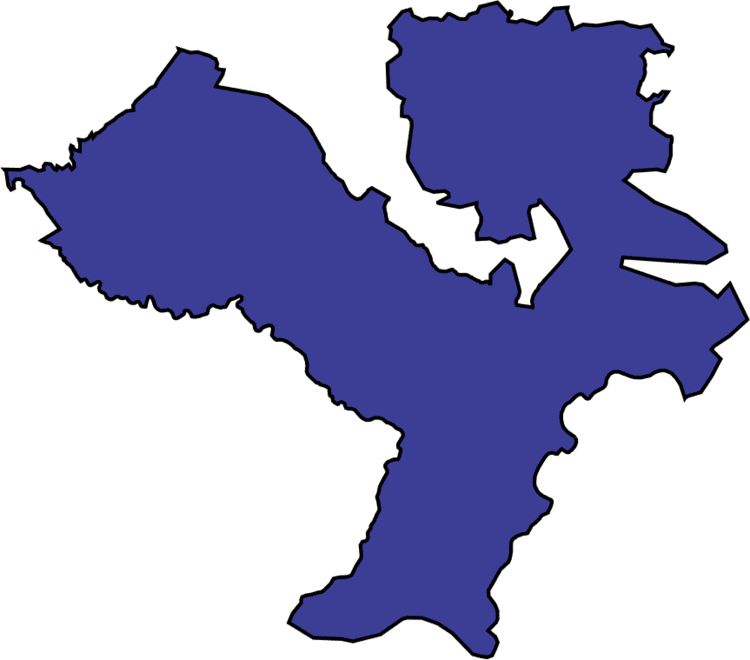
In Albanian the area is called Rrafshi i Dukagjinit and means the plateau of Dukagjin, as the toponym (in Albanian language) took the name of the Dukagjini family.
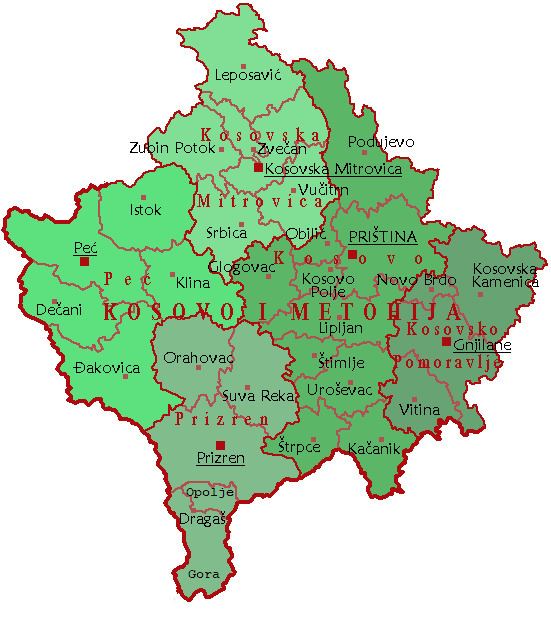
The term "Kosovo and Metohija" (Serbian Cyrillic: Косово и Метохија) was in official use of the province until 1974, when the constitutional status of Kosovo underwent major changes in a newly established constitution for the Socialist Federal Republic of Yugoslavia. The 1974 constitution dropped the term "Metohija", and "Kosovo" became the official term for the province as a whole. The change was not accepted in Serbia, where the old name continued to be in use (for example in the Memorandum of the Serbian Academy of Sciences and Arts in 1986). In 1989, the then Serbian President Slobodan Milošević promulgated a new constitution that greatly reduced the province's autonomy and restored the old name, thus symbolically undoing the earlier reforms.
Geography

Metohija is 23 km (14 mi) wide at its broadest point and about 60 km (37 mi) long, at an average altitude of 450 m (1,476 ft) above sea level. Its principal river is the White Drin. It is bordered by the mountain ranges Mokra Gora in the north and northwest, the Prokletije in the west, Paštrik (Albanian: Pashtrik) in the southwest, the Šar Mountains (Albanian: Malet e Sharrit) in the south and southeast, and Drenica, which distinguishes it from the rest of Kosovo in the east and northeast.
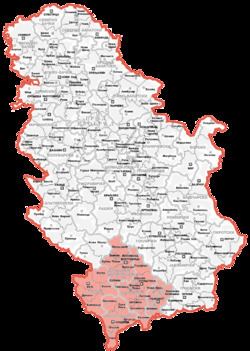
The geographic division between Metohija and eastern Kosovo causes differences between the two areas' flora and fauna. Metohija has the characteristic influences of the Mediterranean, while eastern Kosovo's ecology does not differ from Central Serbia's.
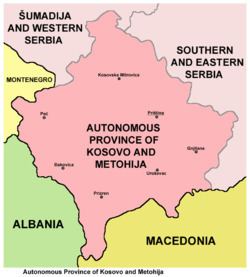
Metohija consists of fertile arable land with many small rivers which provide water for irrigation and, in combination with the Mediterranean climate, give excellent fields except for cereals. This area is well known for its high-quality vineyards, fruit orchards, and for the growing of chestnut and almond trees.
The geographical region of Metohija is further divided into four parts: Podgor, Prekoruplje, Reka and Rugovo.
History
The earliest known inhabitants were Illyrian tribe Dardanians. Under their leader Bardylis 393 BC - 358 BC, Dardanians became one of the most powerful Illyrian kingdom of that time. With the beginnings of Augustus' rule in 6 AD, they were finally conquered by Rome. At first, Dardania was not a separate Roman province, but became a region in the province of Moesia Superior in 87 AD. During the reign of Emperor Diocletian (r. 284-305) the area was divided in the two newly established provinces, Praevalitana and Dardania.
Coinciding with the decline of the Roman Empire, many "barbarian" tribes passed through the Balkans, most of whom did not leave any lasting state. The area remained part of the Byzantine empire until the late early 7th century when the Slavic migration destroyed Byzantine authority in most of the Balkan peninsula. At the dawn of the 10th century, Metohija was conquered by Bulgarian Tsar Simeon. Byzantine rule was restored after its fall in 960. In the decade 1180-90, taking advantage of the internal disorders of Byzantium under Andronicus, of the Hungarian attack launched in 1183 with which Nemanja was allied, of the Norman invasion in 1185, and of the Third Crusade in 1189, Nemanja was able to conquer Kosovo and Metohija, including Prizren, thus incorporating it into the Nemanjic state. Between 1387 and 1459, the area was under control of the Albanian Dukagjini family, as part of the Principality of Dukagjini, and later part of the League of Lezhë.
Metohija was conquered by the Ottomans and incorporated into the Empire's Vilayet of Kosovo after the fall of Serbia in 1459 and the occupation of large parts of Albanian territories.
The area was taken by the Kingdom of Montenegro in the 1912 First Balkan War except Prizren area, conquered by Kingdom of Serbia. During the First World War, Montenegro was conquered by the Austro-Hungarian forces in 1915. The Central Powers were pushed out of Metohija by the Serbian Army in 1918. Montenegro subsequently joined the Kingdom of Serbia, which was followed by the formation of the Kingdom of Serbs, Croats and Slovenes. The Kingdom was reformed into the Kingdom of Yugoslavia in 1929. The Kingdom suffered an Axis invasion during World War II in 1941, and the region of Metohija was incorporated into Italian-controlled Albania, with the Italians employing the "Vulnetari", an Albanian volunteer milita, to control the villages. After Italy's treaty with the Allies in 1943, the Germans took direct control over the region, supported by the local Albanian collaborationists (Balli Kombëtar). After numerous rebellions of Serb Chetniks and Yugoslav Partisans, Metohija was captured by Serb forces in 1944. In 1946, it became part of Serbia's Autonomous Province of Kosovo and Metohija, within the transitional Democratic Federal Yugoslavia.
On 17 February 2008, Kosovo unilaterally declared independence from Serbia. The country still considers Metohija part of its sovereign territory.
